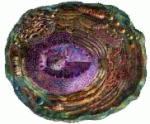Cell Biology
|
23 november 2014 05:46:42 |
| The Aspergillus nidulans Zn(II) 2 Cys 6 transcription factor AN5673/RhaR mediates L-rhamnose utilization and the production of ¿-L-rhamnosidases (Microbial Cell Factories) |
|
Tweet Background:
Various plant-derived substrates contain L-rhamnose that can be assimilated by many fungi and its liberation is catalyzed by ?-L-rhamnosidases. Initial data obtained in our laboratory focussing on two Aspergillus nidulans ?-L-rhamnosidase genes (rhaA and rhaE) showed ?-L-rhamnosidase production to be tightly controlled at the level of transcription by the carbon source available. Whilst induction is effected by L-rhamnose, unlike many other glycosyl hydrolase genes repression by glucose and other carbon sources occurs in a manner independent of CreA. To date regulatory genes affecting L-rhamnose utilization and the production of enzymes that yield L-rhamnose as a product have not been identified in A. nidulans. The purpose of the present study is to characterize the corresponding ?-L-rhamnosidase transactivator.
Results:
In this study we have identified the rhaR gene in A. nidulans and Neurospora crassa (AN5673, NCU9033) encoding a putative Zn(II)2Cys6 DNA-binding protein. Genetic evidence indicates that its product acts in a positive manner to induce transcription of the A. nidulans L-rhamnose regulon. rhaR-deleted mutants showed reduced ability to induce expression of the ?-L-rhamnosidase genes rhaA and rhaE and concomitant reduction in ?-L-rhamnosidase production. The rhaR deletion phenotype also results in a significant reduction in growth on L-rhamnose that correlates with reduced expression of the L-rhamnonate dehydratase catabolic gene lraC (AN5672). Gel mobility shift assays revealed RhaR to be a DNA binding protein recognizing a partially symmetrical CGG-X11-CCG sequence within the rhaA promoter. Expression of rhaR alone is insufficient for induction since its mRNA accumulates even in the absence of L-rhamnose, therefore the presence of both functional RhaR and L-rhamnose are absolutely required. In N. crassa, deletion of rhaR also impairs growth on L-rhamnose.
Conclusions:
To define key elements of the L-rhamnose regulatory circuit, we characterized a DNA-binding Zn(II)2Cys6 transcription factor (RhaR) that regulates L-rhamnose induction of ?-L-rhamnosidases and the pathway for its catabolism in A. nidulans, thus extending the list of fungal regulators of genes encoding plant cell wall polysaccharide degrading enzymes. These findings can be expected to provide valuable information for modulating ?-L-rhamnosidase production and L-rhamnose utilization in fungi and could eventually have implications in fungal pathogenesis and pectin biotechnology. |
| 91 viewsCategory: Microbiology, Cell Biology |
 Tuning constitutive recombinant gene expression in Lactobacillus plantarum (Microbial Cell Factories) Tuning constitutive recombinant gene expression in Lactobacillus plantarum (Microbial Cell Factories)An autotransporter display platform for the development of multivalent recombinant bacterial vector vaccines (Microbial Cell Factories) 
|
| blog comments powered by Disqus |
MyJournals.org
The latest issues of all your favorite science journals on one page
The latest issues of all your favorite science journals on one page



